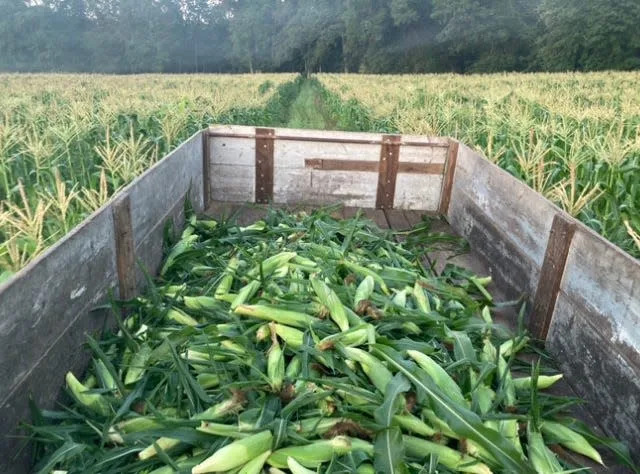Home News Tribune – My Central Jersey
Tips for harvesting and storing summer vegetables | Gardener State
William Errickson – August 28, 2022
This is an exciting time of the year to be a gardener as many summer vegetables are at peak ripeness and ready to harvest. There is nothing like slicing into a vine ripened Jersey tomato or enjoying an ear of sweet corn that was picked that day.
Whether you grow your own vegetables or purchase them from a local farmer, it is important to know when and how to pick vegetables at the right time, so they are at their highest quality. Once you have harvested your vegetables, or brought them home from the market, they must also be stored properly so they retain their freshness for as long as possible.
With these tips for picking and storing summer vegetables, you can be eating Jersey Fresh all throughout the harvest season.
Tomatoes

For the best flavor, tomatoes should be allowed to ripen on the vine. This means that their full color has developed before they are picked. While most of the time we are talking about a red tomato, there are also many varieties of tomatoes that are different colors such as yellow, orange, pink and even striped! Once the tomato has turned color, gently grasp the fruit (yes, a tomato is a fruit) and twist it away from the plant. Be careful not to damage the skin of the tomato when you are picking them or when you are bringing them home from the market because this can cause them to rot prematurely. Try not to stack too many ripe tomatoes on top of one another in your harvest basket either, as this can also damage them.
Tomatoes should not be refrigerated and store best at temperatures over 50degrees. Don’t wash tomatoes until you are ready to eat them and if you must store a tomato that has already been sliced, then you can put it in an airtight container and put it in the refrigerator. Remember, this is the only time that a tomato should go in the refrigerator as they will get soft, and their quality will decline rapidly.
Corn

It can be tricky to choose the best and ripest ears of sweet corn. The silks at the top of the ear will turn brown and die back when the ear is mature and ready to harvest. If you wrap your hand around the ear, it should feel plump, and you should be able to feel the individual kernels through the outer husk. If you are picking sweet corn in the field and you have identified a fully ripened ear, grab the ear in your hand and twist it away from the plant in a downward motion. It should break off from the stalk easily and you will now be holding some of the best that Jersey has to offer.
More:Edison’s first community garden will help feed those in need
More:Exploring summer gardens in NJ and beyond | Gardener State
The husk should not be removed until you are ready to cook and eat sweet corn because it protects the kernels and prevents them from drying out. Corn can be stored in the refrigerator, but it will have the highest quality if it is eaten on the same day that it was picked. If corn is stored for too long, then the sugars in the kernels start to turn to starch and it will not be as sweet.
Melons
Cantaloupes and other melons must be allowed to ripen on the vine to develop their full sugar content and flavor profile, so it is important not to get impatient and attempt to harvest your melons before they are ready. The skin of a cantaloupe will turn from green to yellowish orange when they are ripe, and the fruit should slip easily off the vine. They will also smell sweet and fragrant like floral honey when they ripen, so don’t be afraid to use your nose. Ripe melons can be stored in the refrigerator for a short time but should be eaten within a week of harvest.
Watermelons will not necessarily slip off the vine the way that cantaloupes do, and they do not give off a heavy fragrance, but there are other clues that we can use to determine when they are ready. Look for ripe watermelons to have a yellow spot on the bottom, where the fruit was in contact with the ground. Those with a trained ear also say that if you tap on a ripe watermelon it should sound “hollow” when you put your ear up to it. Watermelons have a longer shelf life than other melons and should be refrigerated, especially after they are cut.
If you are looking for Jersey Fresh vegetables this harvest season, be sure to check out Cook’s Market every Friday from 11 a.m. to 3 p.m. at Rutgers Gardens, 130 Log Cabin Road in New Brunswick.
William Errickson is the Agriculture and Natural Resources Agent for Rutgers Cooperative Extension of Monmouth County.
